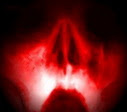
IRON MAN: The Cinema of Shinya Tsukamoto
FAB PRESS
BOOK REVIEW
Shinya Tsukamoto is one of the major avatars of modern (trans) genre cinema – one of those authors who take genres only to deconstruct them from within, creating at the same time unique, personal visions which transcend the usual generic limitations and imbue what for all intentions and purposes are legitimate works of art. As such, he belongs to the group of 'technoperes' with the likes of Alejandro Jodorowsky, David Cronenberg, David Lynch, Lars Von Trier and Gaspar Noe, while among the Asian directors his colleagues in this strategy are the people like Takashi Miike (who wrote an amusing foreword to this book!), Kim Ki-Duk and Park Chan-Wook. While thematic and stylistic approaches of these authors may vary, and are too different to be put under a single label, what they all have in common is a strong, violent vision which emerges, uncompromisingly, from the lower depths of independent (genre) cinema and rises straight into the undeniable trans-genre significance of pure cinematic genius.
IRON MAN, the book-length study of Tsukamoto's oeuvre, shows in a linear, well-argumented manner, his progress from the earlier days of teenage experimentation with Super-8 filmmaking, through the underground low budget excesses of 16mm TETSUO, all the way up to the his ultimate conquest of the most renowned film festivals in the world, like Venice, Toronto, Cannes, Tokyo, London, and others. It shows the development of one of the most independent filmmakers working today – one who, even after numerous prestigious awards, still battles for finances and works only under his own terms, with a constant, devoted crew and actors who participate for minimum wages just for the opportunity to work with him.
The book is written by Tom Mes, an expert on Japanese cinema and founder of the indispensable web site Midnight Eye, who's already dedicated a book to a detailed study of Takashi Miike's work (AGITATOR, one of the best-selling and most critically praised FAB Press books). IRON MAN is excellently organized so as to provide a clear-cut view of Tsukamoto's career: after introductory chapters dealing with this director's childhood and early short works, each following chapter is dedicated to a single feature film, in the order they were made. Furthermore, each of those chapters is divided into three parts: 1) the production background, the making and release history, intentions and results, anecdotes and awards; 2) detailed analysis of the themes and ideas, as well as style of their expression, in the particular film, viewed in the context of Tsukamoto's overall concerns; and 3) director's final words on that film.
A special chapter is devoted to Tsukamoto's acting in other people's films, and there's a special epilogue which announces that the long-awaited TETSUO III may be his next film (update: TETSUO III was released only in 2009)! The fans of his most popular film will be happy to learn that final words of the book are Tsukamoto's: ''I will make TETSUO III as dark and deep as a TETSUO film should be made, with no compromises.'' If you had any doubts, you can lay them to rest now. After all, this is the man who did not exactly jump at the opportunity to have TETSUO IN AMERICA made under Tarantino's production just because he had some doubts about the dangers for the integrity of his vision! The book is crowned by the detailed filmography, description of all available DVD editions of his work, and bibliography.
The background parts of the book profit enormously from Mr. Mes's direct contact with Tsukamoto and members of his crew: he is able to illustrate his points with numerous quotes from all the people involved (including the inimitable Chu Ishikawa, his composer and provider of the major input in creating the aural landscape of Tsukamoto's films), and thus provides a clear impression of all the work behind the scenes. The critical parts are deservedly serious and meticulously analytical, well-judged and supported with good arguments. Perhaps one might complain that Mes praises too much and criticizes too little (if at all), but when the subject is an opus like that of Tsukamoto's, there are very few complaints to write about. Constantly having in mind the context of his entire oeuvre, Mes manages to convincingly show, for example, that even work-for-hire titles like HIRUKO THE GOBLIN and GEMINI bear the imprint of Tsukamoto's major concerns and thus firmly belong to his opus.
Lavish illustrations – many of them rare photos obtained directly from Tsukamoto – add a further quality to the already excellent text, and serve to prove its major arguments. As such, they are integral parts of the book, which is luckily far more ambitious than a mere picture-book for this director's fans, and it actually ends up being a perfect homage to this great director. This study achieves a perfect balance between fact, information, entertainment and seriousness, never getting dull with either biographical or critical detail, and is thus a good, fluid read for both academics and regular otakus. FAB press is to be commended for yet another high quality publication, and Tom Mes for writing an account of Tsukamoto's work that this director (and his fans) certainly deserve.
After Miike, and now Tsukamoto, I only wonder – who's the next subject of Mes's midnight eye? Could it be Kiyoshi Kurosawa? Now that's a book that needs to be written!




Нема коментара:
Постави коментар